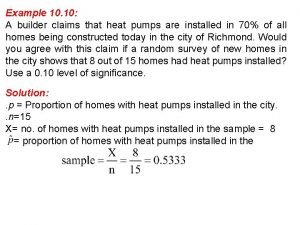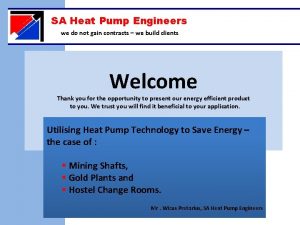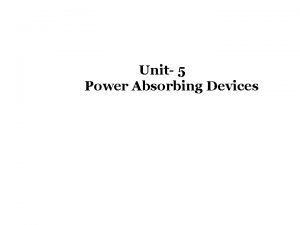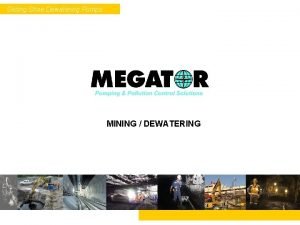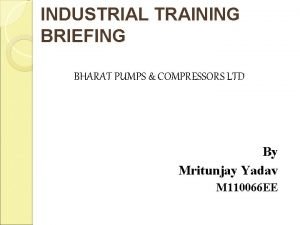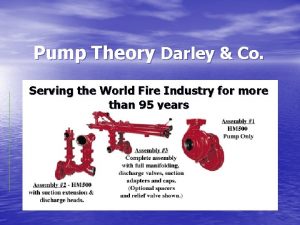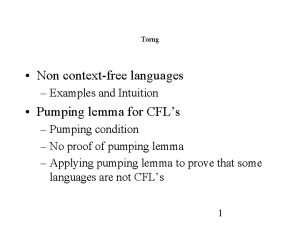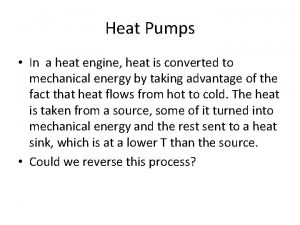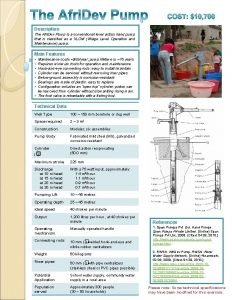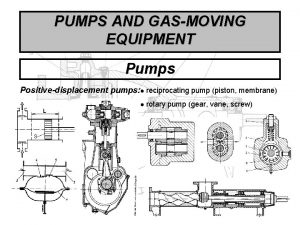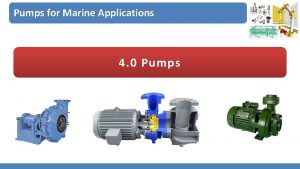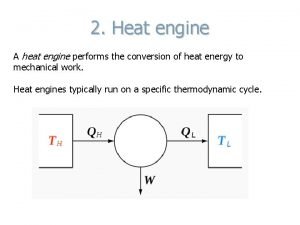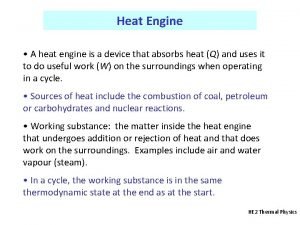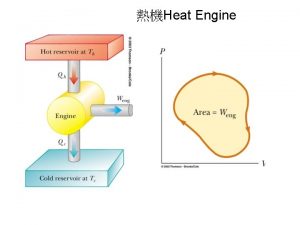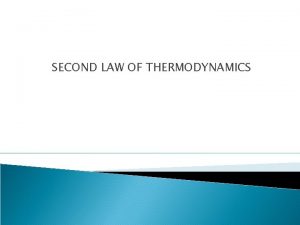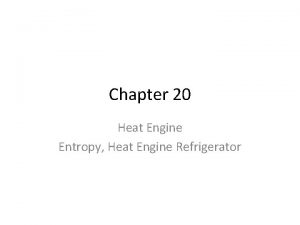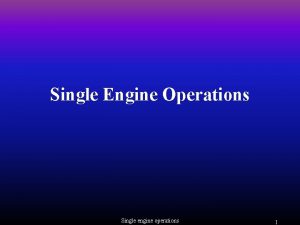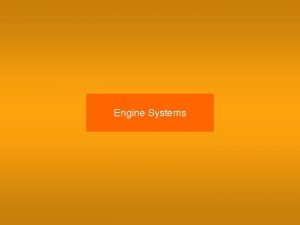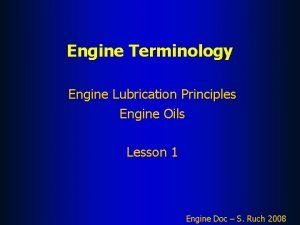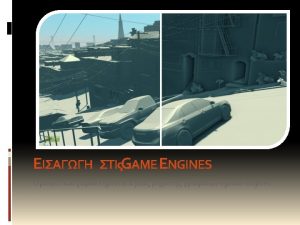Heat Pumps In a heat engine heat is















- Slides: 15

Heat Pumps • In a heat engine, heat is converted to mechanical energy by taking advantage of the fact that heat flows from hot to cold. The heat is taken from a source, some of it turned into mechanical energy and the rest sent to a heat sink, which is at a lower T than the source. • Could we reverse this process?

Heat pumps • A compressor compresses a gas (Freon) to raise its Temperature and pressure. • It flows through a heat exchanger in which the gas is cooled by room temp air and it condenses. • The heat it gives up in condensing goes to heat the inside air around the heat exchanger. • The gas then passes through a valve to a region of lower pressure where it expands and becomes very cold. • It next passes through a heat exchanger exposed to outside air. The outside air warms the gas and it returns to the compressor and starts the cycle all over again. • Reverse the process for cooling

Heat pumps

Heat pumps • Effectiveness measured by the Coefficient of Performance • C. O. P. = Th/(Th-Tc) This comes from the Carnot Efficiency • As the outside air gets colder, Th-Tc gets larger to C. O. P decreases. This means heat pumps are less efficient in very cold weather and very cold climates. Usually this occurs when the outside T falls below 15 F.

Peltier effect • Peltier was experimenting with electricity • Connected a bismuth and copper wire together and hooked them to a battery. • Found one side became hot and the other cold as the current flowed! • Basis for thermoelectric cooling/heating • Modern devices use semi-conductors (more efficient). • Not efficient enough for large scale heating or cooling

Peltier effect

Cogeneration • Power plants generate lots of waste heat • Modern coal fired plants convert 38% of the energy in the coal to electricity, the other 62% is waste! • Usually shed off into the environment (air, cooling pond, river, lake etc) • Can have environmental consequences • Can it be put to use?

Cogeneration • Problem arises when the power plant is located far away from population centerscannot effectively transport the heat over long distances • In principle, the waste heat could be used to heat a boiler and provide steam for space heating and cooling. • Or it could be recycled to drive turbines to produce additional electricity

Types of cogeneration plants • Topping cycle plants - produce electricity from a steam turbine. The exhausted steam is then condensed, and the low temperature heat released from this condensation is utilized for heating. • Bottoming cycle plants- produce high temperature heat for industrial processes, then a waste heat recovery boiler feeds an electrical plant. Need a high initial source of heat-metal manufacturing plants.

Examples • The New York City steam system - district heating system which carries steam from central power stations under the streets of Manhattan to heat, cool, or supply power to high rise buildings and businesses. • Another example is in use at the University of Colorado, Boulder - Total efficiency is 70% • Possibility of explosions due to pipe failures exists

Example of Explosions • The July 18, 2007 New York City steam explosion sent a geyser of hot steam up from beneath a busy intersection, with a 40 -story-high shower of mud and flying debris raining down on the crowded streets of Midtown Manhattan • It was caused by the failure of a Consolidated Edison 24 inch underground steam pipe installed in 1924

Possibilities • Outside the U. S. , energy recycling is more common. Denmark is probably the most active energy recycler, obtaining about 55% of its energy from cogeneration and waste heat recovery. • In the US about 8% of its electricity is produced via cogeneration

Solar Power • Power derived directly from sunlight • Seen elsewhere in nature (plants) • We are tapping electromagnetic energy and want to use it for heating or convert it to a useful form, usually electricity • Renewable-we won’t run out of sunlight (in its current form) for another 4 -4. 5 billion years

Solar Energy • Sun derives its energy from nuclear fusion deep in its core • In the core Hydrogen atoms are combining (fusing) to produce helium and energy. • Physicists refer to this as Hydrogen burning, though be careful, it is not burning in the usual (chemical) sense. • The supply of H in the sun’s core is sufficient to sustain its current rate of H burning for another 4 -4. 5 billion years

Solar Energy • The energy is released in the H burning deep in the sun in the form of photons. • Here we use the particle description of light, where light is considered a packet of energy called a photon. • Photons have energy E=hν or E =hc/λ where ν is the frequency of the light, λ is the wavelength of the light, c is the speed of light (c=3. 00 x 108 m/s) and h is Planck’s constant (h=6. 626068 × 10 -34 m 2 kg / s)
 A builder claims that heat pumps are installed in 70
A builder claims that heat pumps are installed in 70 Sa heat pump
Sa heat pump Internal combustion engine vs external combustion engine
Internal combustion engine vs external combustion engine Maxp series pumps
Maxp series pumps Turbines are power absorbing devices
Turbines are power absorbing devices Megator pumps
Megator pumps Bharat pumps and compressors
Bharat pumps and compressors Darley pump parts
Darley pump parts Intuition pumps examples
Intuition pumps examples Heat engine
Heat engine Chandelier electrical symbol
Chandelier electrical symbol Afri pumps
Afri pumps Pumps and controls
Pumps and controls Vacuum pumps
Vacuum pumps Module 00105 introduction to construction drawings answers
Module 00105 introduction to construction drawings answers Sewage pump size calculator
Sewage pump size calculator
